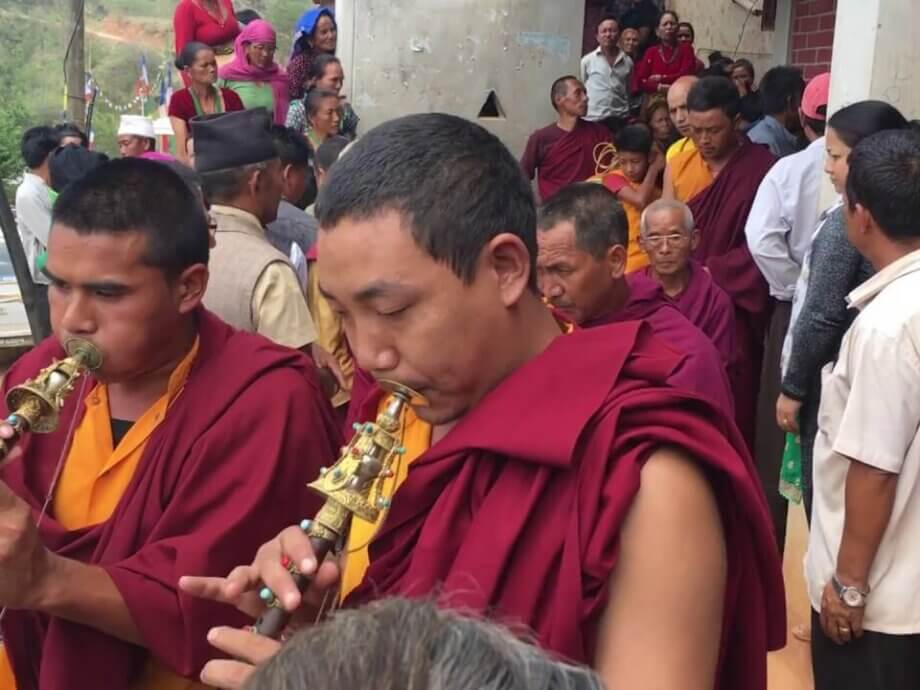The Gender Divide in Nepal’s Funeral Rites
In Nepal, a country rich in tradition and spiritual heritage, the rituals surrounding death are deeply significant. Yet, for many women, these sacred rites are a stark reminder of the gender inequalities that persist even in the most intimate moments of loss. The practice of shraddha—the ritual oblation performed to honor deceased parents—remains largely the domain of sons, with daughters often barred from participating, regardless of their devotion or proximity to the deceased. This exclusion is not just a matter of custom; it is a reflection of broader societal attitudes toward gender, identity, and the role of women in Nepali culture.
- The Gender Divide in Nepal’s Funeral Rites
- Personal Stories: Daughters Defying Tradition
- Understanding Shraddha: Ritual, Religion, and Gender
- Variations Across Communities: Caste, Class, and Custom
- Challenging the Status Quo: Daughters Who Break Barriers
- Scripture Versus Social Control: What Do the Texts Say?
- The Broader Context: Gender Discrimination in Nepali Society
- Signs of Change: Women Taking the Lead in Rituals
- Rituals, Modernity, and the Meaning of Mourning
- In Summary
For centuries, the belief has prevailed that only a son can ensure the salvation of his ancestors’ souls. In the absence of a son, families frequently seek out distant male relatives or even hire priests, rather than allow a daughter to perform the rites. The rationale, rooted in tradition, is that a daughter’s participation could rob the deceased of punya—spiritual merit. This belief, however, is increasingly being challenged by women, activists, and even some religious scholars.
Personal Stories: Daughters Defying Tradition
The struggle for the right to mourn is not abstract. It is lived daily by women like Durga (a pseudonym), who, at just 18, stood at the Pashupati Aryaghat in Kathmandu to light her mother’s funeral pyre. With no brothers in the family, Durga’s decision was met with resistance from priests and community members alike. The priest demanded a male stand-in, and villagers pleaded for any man to take her place. Durga, however, stood firm, insisting, “She was my mother. Who else had more right to give her peace?”
Despite her resolve, Durga faced significant backlash. The priest initially refused to conduct the mourning ceremonies, warning that her actions would bring misfortune and deny her mother’s soul salvation. Even after relenting, the priest delayed the rituals, and neighbors ostracized the family, refusing even to drink water in their home. For Durga, the pain of losing her mother was compounded by the denial of her right to grieve as a daughter.
Durga’s experience is echoed by many across Nepal. Radhika Sapkota, now a women’s rights activist and executive director of Sahayatri Samaj Nepal, recalls facing similar discrimination at age 13 when her mother died. “We were the ones who loved our mother the most, yet society dismissed our devotion because we were daughters,” Sapkota says. “A distant male relative was valued more just because he was male. Could his grief and devotion be greater than ours?”
Understanding Shraddha: Ritual, Religion, and Gender
Shraddha is a central ritual in Hindu tradition, performed to honor and appease the spirits of deceased ancestors. The ceremony typically involves offerings of food and water, the chanting of Sanskrit mantras, and the lighting of a funeral pyre. The belief is that these acts help the departed soul attain peace and ensure the family’s continued blessings.
Traditionally, shraddha is performed by the eldest son or, in his absence, another male relative. The exclusion of daughters is justified by the notion that, upon marriage, a woman’s gotra (patrilineal lineage) is transferred to her husband’s family. This transfer is symbolically marked by a ritual in which the father eats only one meal, mirroring the observance for a death in the family. As sociologist Narayani Devkota explains, “They call it ‘gotra sarne,’ but I see it as performing shraddha for a daughter while she’s still alive.”
For married daughters, the situation is even more complex. If a married daughter dies, her own parents and brothers are not permitted to perform her funeral rites. The responsibility falls to her son, if she has one, or to distant male relatives from her husband’s side—or, tellingly, to a hired priest. The husband himself is excluded from the ritual. This practice underscores the belief that a woman’s ties to her natal family are severed upon marriage, while a man’s remain intact.
Variations Across Communities: Caste, Class, and Custom
The gendered nature of funeral rites is not limited to one community. In Brahmin families, the rules are particularly rigid, but similar patterns are found among Newar and Madheshi communities. In Newar tradition, only male relatives can lead funeral ceremonies. Widows are required to wear white for a year, avoid rich foods, and sleep on the floor for 45 days after their husband’s death. In contrast, men face no such restrictions when their wives die. As Medhavi Shrestha, a student of journalism and English literature, observes, “A married woman can mourn her maternal family for just four days but must mourn her husband’s family for 13. Why does mourning even have a gendered timeline?”
In rural Madheshi regions, the restrictions are even more severe. Women are often banned from cremation grounds entirely, forbidden to approach the pyre or participate in the rituals. These prohibitions are enforced not only by religious authorities but also by community pressure and the threat of social ostracism.
Challenging the Status Quo: Daughters Who Break Barriers
Despite the weight of tradition, some families and individuals are challenging the status quo. In 2019, two sisters in Dhading district, Sangita and Sarala Duwadi, performed the final rites for their mother, defying the expectation that only sons can do so. Their father, Bishwaram Duwadi, publicly praised their courage, stating, “Thank you, my lovely daughters, for breaking the traditional stereotype and taking the responsibility of performing the final rites of your mother all by yourselves. I hope this will set an example that no daughter is less than a son.”
Such acts of defiance are still rare, but they are becoming more visible, especially in urban areas and among families with progressive attitudes. Social media has played a role in amplifying these stories, encouraging others to question long-held beliefs. However, the backlash can be severe, particularly in rural communities where tradition holds greater sway and the threat of social exclusion is real.
Scripture Versus Social Control: What Do the Texts Say?
One of the most contentious aspects of the debate is whether the exclusion of women from funeral rites is mandated by religious scripture or is a product of social interpretation. According to Narayani Devkota and other scholars, there is no explicit scriptural ban on daughters performing shraddha. Many senior priests well-versed in the Dharmashastra (Hindu codes) affirm that the practice is a matter of custom, not divine law. In contrast, some priests with limited knowledge are more dogmatic, insisting on the exclusion of women as a religious imperative.
Radhika Sapkota argues, “It’s social control disguised as religion. The belief that women can’t perform shraddha is a biased interpretation of scriptures used to maintain the status quo.” This view is supported by activists and some religious reformers, who point out that Hinduism, like all religions, has evolved over time and is subject to reinterpretation.
The Broader Context: Gender Discrimination in Nepali Society
The exclusion of women from funeral rites is part of a larger pattern of gender discrimination in Nepal. As Uma Bhandari, president of the Rural Women’s Network Nepal (Ruwon), explains, “Women in Nepal face discrimination from the womb.” The preference for sons is deeply ingrained, influencing everything from inheritance laws to educational opportunities. Until recently, only sons could inherit property, and women’s rights to divorce or remarry were severely restricted.
While legal reforms have been enacted to address some of these inequalities, enforcement remains weak, especially in rural areas. Traditional norms continue to dictate women’s roles, often at the expense of their individual rights and dignity. As Bhandari notes, “Nepali culture thinks of a woman’s social self, a term she uses to describe a woman’s role in the community, and does not focus enough on her as an individual person.”
Signs of Change: Women Taking the Lead in Rituals
Despite the challenges, there are signs of change. In recent years, more women have begun to perform shraddha, especially in cases where there are no sons. Some organizations, like the Homeless Management and Rehabilitation Centre in Kathmandu, have even employed women like Sapana to perform funeral rites for unclaimed bodies, challenging the notion that only men can fulfill these sacred duties.
During the annual Sohra Shraddha period—a 16-day festival dedicated to honoring ancestors—some families now invite married daughters back to participate in the ceremonies. While the primary responsibility still falls to sons, these gestures reflect a gradual shift in attitudes. As Nepal becomes more urbanized and families become more dispersed, traditional practices are being reevaluated in light of modern realities.
Rituals, Modernity, and the Meaning of Mourning
The debate over who can perform funeral rites is not just about ritual; it is about the meaning of mourning and the value placed on relationships. As one commentator in Rising Nepal Daily notes, “Shraddha also has social value, as daughters who have married and left their homes are invited back for the ceremony, providing an opportunity to catch up with siblings and honour shared traditions.”
Yet, as families become more nuclear and urbanized, the communal aspect of shraddha is fading. Elderly parents are often left behind in rural areas or sent to care homes, raising questions about how best to honor them—both in life and in death. Some argue that the true essence of shraddha lies not in ritual, but in the love and care shown to parents while they are alive.
In Summary
- Nepal’s funeral rites, especially shraddha, remain deeply gendered, with daughters often excluded from performing rituals for their parents.
- This exclusion is rooted more in tradition and social control than in religious scripture, according to many scholars and activists.
- Personal stories, like those of Durga and the Duwadi sisters, highlight both the pain of exclusion and the courage of those who challenge the status quo.
- Gender discrimination in funeral rites reflects broader patterns of inequality in Nepali society, from inheritance laws to social expectations.
- Signs of change are emerging, with more women performing rituals and families rethinking traditional roles, especially in urban areas.
- The debate over funeral rites is ultimately about dignity, equality, and the right to mourn—a fight that continues in both life and death.












